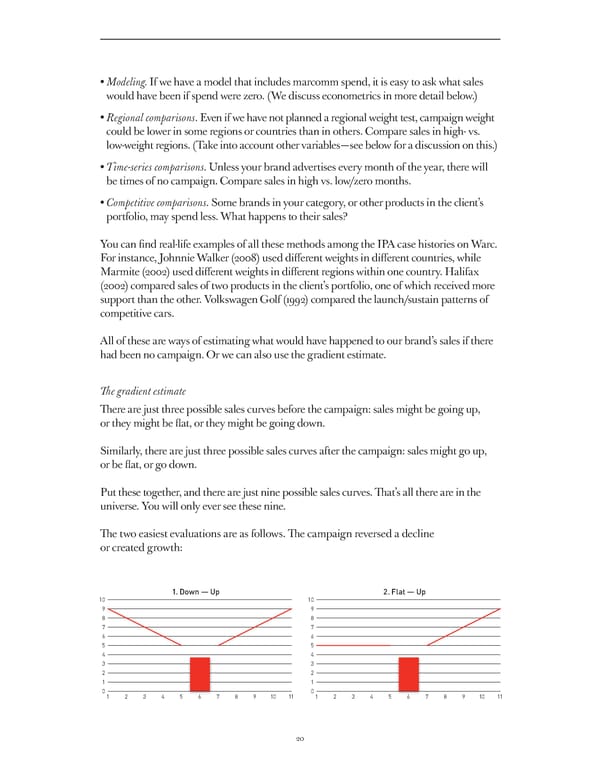• Modeling. If we have a model that includes marcomm spend, it is easy to ask what sales would have been if spend were zero. (We discuss econometrics in more detail below.) • Regional comparisons. Even if we have not planned a regional weight test, campaign weight could be lower in some regions or countries than in others. Compare sales in high- vs. low-weight regions. (Take into account other variables — see below for a discussion on this.) • Time-series comparisons. Unless your brand advertises every month of the year, there will be times of no campaign. Compare sales in high vs. low/zero months. • Competitive comparisons. Some brands in your category, or other products in the client’s portfolio, may spend less. Wh at happens to their sales? You can fi nd real-life examples of all these methods among the IPA case histories on Warc. For instance, Johnnie Walker (2008) used diff erent weights in diff erent countries, while Marmite (2002) used diff erent weights in diff erent regions within one country. Halifax (2002) compared sales of two products in the client’s portfolio, one of which received more support than the other. Volkswagen Golf (1992) compared the launch/sustain patterns of competitive cars. All of these are ways of estimating what would have happened to our brand’s sales if there had been no campaign. Or we can also use the gradient estimate. Th e gradient estimate Th ere are just three possible sales curv es before the campaign: sales might be going up, or they might be fl at, or they might be going down. Similarly, there are just three possible sales curv es after the campaign: sales might go up, or be fl at, or go down. Put these together, and there are just nine possible sales curv es. Th at’s all there are in the universe. You will only ever see these nine. Th e two easiest evaluations are as follows. Th e campaign reversed a decline or created growth: 1. Down — Up 2. Flat — Up 10 10 9 9 8 8 7 7 6 6 5 5 4 4 3 3 2 2 1 1 0 0 1 2 3 4 5 6 7 8 9 10 11 1 2 3 4 5 6 7 8 9 10 11 20
 A Guide To Effectiveness Page 19 Page 21
A Guide To Effectiveness Page 19 Page 21